Smiles Restored with Precision and Care
Restorative Dentistry in Austral

What Restorative Dentistry Can Do for You
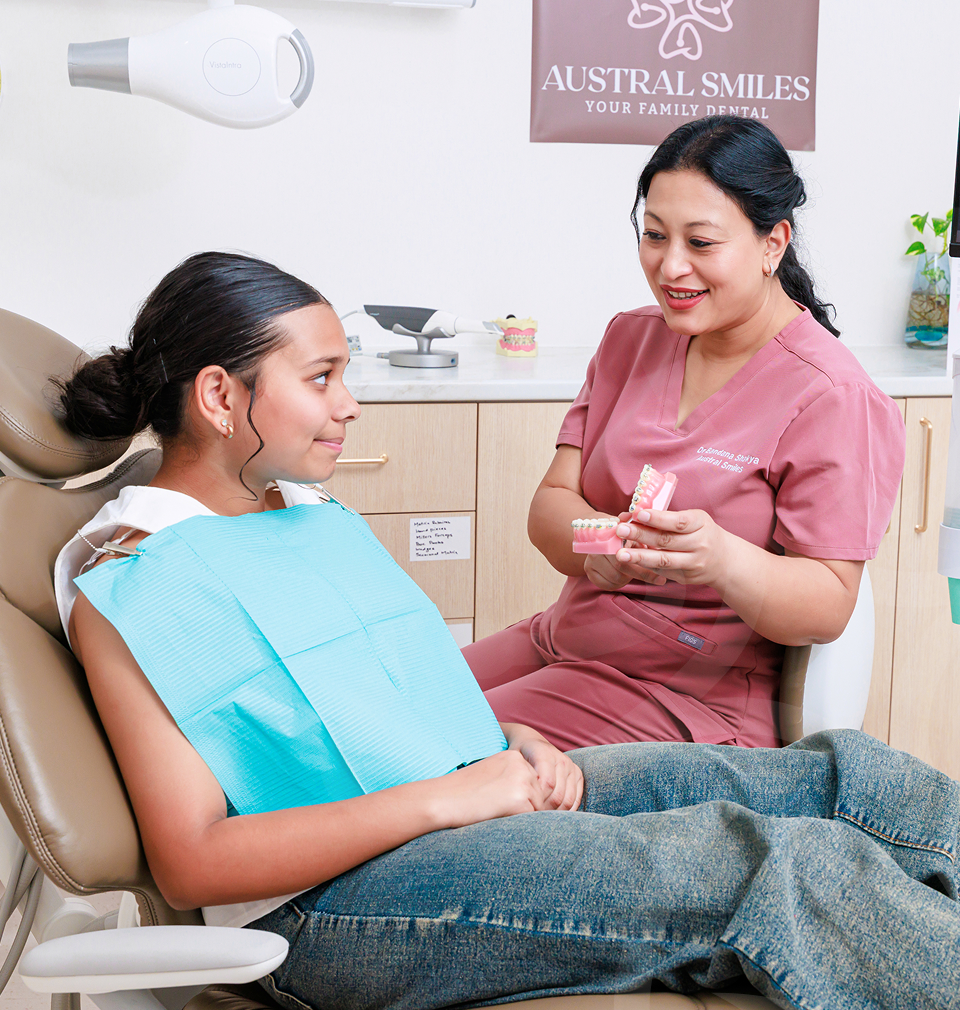
Ideal Candidates for Restorative Dentistry Explained
Tooth Decay
Decayed or broken teeth can cause discomfort and difficulty chewing. Restorative care helps strengthen the tooth and prevent further damage to nearby areas.
Missing Teeth
Missing teeth can change the way you eat and speak. Restorative treatment replaces the lost teeth and supports a balanced, comfortable bite.
Worn-Down Teeth
Teeth worn from grinding or erosion may feel sensitive or uneven. Restoring their shape can improve comfort and protect against further wear.
Old or Failing Dental Work
Crowns, fillings, or bridges may loosen or wear out over time. If they feel unstable or uncomfortable, modern materials can be used to rebuild them.
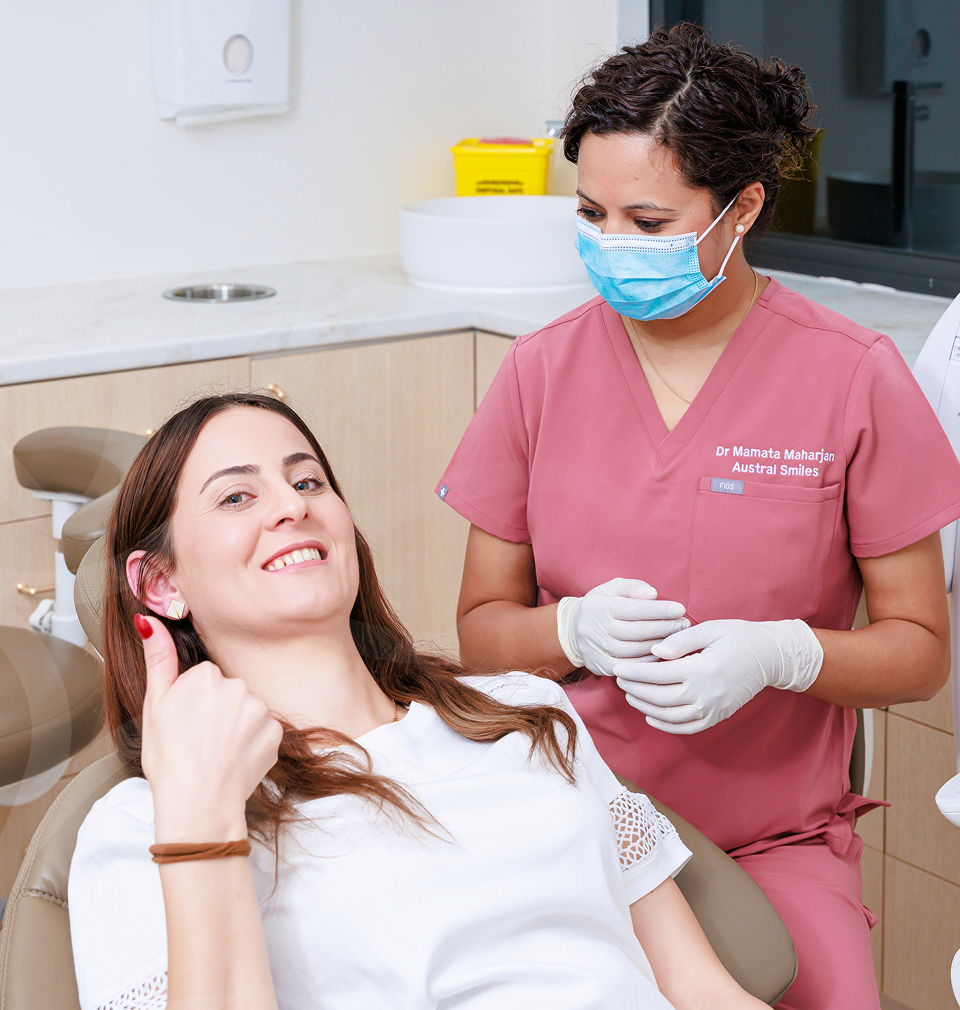
What You Gain From Quality Dental Restoration
Restorative dentistry is more than cosmetic. It supports daily comfort and long-term well-being. At Austral Smiles, patients often notice meaningful improvements like these after completing their personalised dental restoration.
Improved Function
Chewing and speaking become easier when broken or missing teeth are restored. You’ll enjoy meals and conversations without discomfort or awkwardness.
Better Appearance
Treatments are designed to match the look of your natural teeth. They enhance the shape, colour, and alignment of your smile.
Oral Health Protection
Filling gaps and reinforcing weakened teeth helps prevent decay, infection, and shifting. This supports overall oral stability and long-term dental wellness.
Confidence Boost
A healthy, complete smile can positively impact how you feel in social and professional situations. It also supports peace of mind every day.
Restorative Dental Care We Provide in Austral

Dental Implants
Dental implants replace missing teeth with a secure, long-lasting option that feels natural. They help restore your bite and support surrounding bone and gum health.
Learn More

Dental Crowns and Bridges
Crowns strengthen damaged teeth and improve appearance. Bridges fill gaps caused by missing teeth, restoring a natural-looking smile and improving daily function.
Learn More

Let’s Take Care of Your Smile
Before and After Smile Transformations
Discover real patient smile transformations in our gallery! Keep in mind that every smile is unique, so results may vary.

Dental Implants
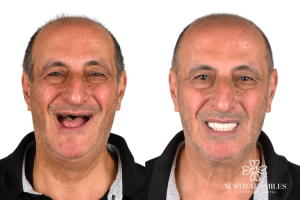
Dental Implants
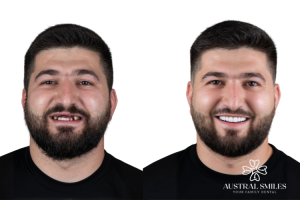
Dental Implants
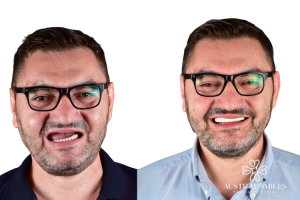
Dental Implants
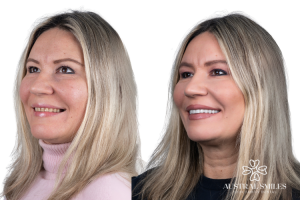
Dental Implants
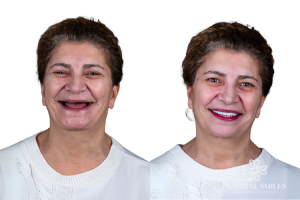
Dental Implants
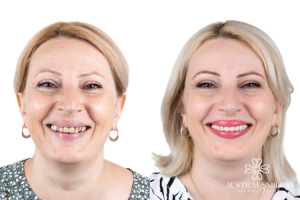
Dental Crowns

Dental Crowns
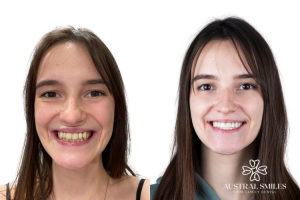
Dental Crowns
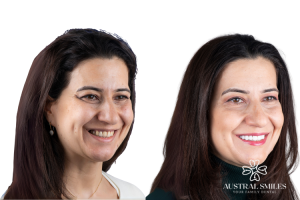
Dental Crowns
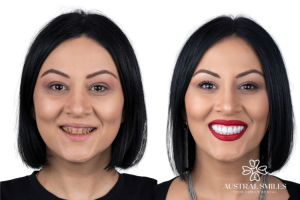
Dental Crowns
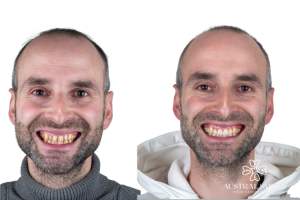
Dental Crowns

A Calming, Supportive Environment
We understand that dental treatment can be overwhelming at times. That’s why we’ve created a calm, caring space where you can feel safe, ask questions, and take your time.
Flexible Payment Options
We know restorative treatments can feel like a big decision, and we’re here to make it easier. Our flexible payment options help you invest in your oral health without the added financial stress.
Durable, Natural-Looking Results
We’re here for lasting care, not temporary results. We use high-quality materials and evidence-based techniques to create restorations designed for longevity. With proper care, they can support your oral health and function for many years.
Experienced Dentists
With more than 30 years of combined experience, our team integrates trusted techniques with a personal touch, restoring function, comfort, and beauty in ways that feel natural for you.
Bring Back Your Smile and Your Confidence
Life happens, and sometimes, so do chipped, missing, or worn-down teeth. At Austral Smiles, we aim to restore function and comfort through clinically tailored treatments, helping you regain confidence in your smile and oral health.
Bring Back Your Smile and Your Confidence
Life happens, and sometimes, so do chipped, missing, or worn-down teeth. At Austral Smiles, we aim to restore function and comfort through clinically tailored treatments, helping you regain confidence in your smile and oral health.
 A Calming, Supportive Environment
A Calming, Supportive Environment
 Durable, Natural-Looking Results
Durable, Natural-Looking Results
 Flexible Payment Options
Flexible Payment Options
We know restorative treatments can feel like a big decision, and we’re here to make it easier. Our flexible payment options help you invest in your oral health without the added financial stress.
 Experienced Dentists
Experienced Dentists

Helpful Information for First-Time Visitors
If you’re new to Austral Smiles, we want to make your visit as smooth as possible. Below are helpful links to guide you before your first appointment.



Payment Options
We offer a range of flexible payment options to help make your dental care more manageable.
We Accept All Health Funds
We’re a CBHS Choice Network and a nib First Choice Network preferred provider, and we accept all major health funds. Our clinic processes eligible CDBS and government programme claims on the spot for your convenience.


What to Expect at Your Appointment
Your restorative appointment at Austral Smiles follows a calm, clear, and caring step-by-step process.
1Warm Welcome
2 Clear Consultation
Your dentist will listen to your concerns and check your oral health. We explain everything clearly, using everyday language to help you feel involved and well-informed.
3 Personalised Plan
Meet the Experienced Dentists at Austral Smiles
Get to know our friendly dental team, each dedicated to providing personalised care to improve your smile and oral health.
Dr. Sushmita Dahal
DEN0001028720, General Dentist
With over 18 years of experience, Dr. Sushmita Dahal has worked across private, public, and not-for-profit clinics in Australia. She combines technical precision with creative skills in dental artistry and smile rehabilitation.
Learn MoreDr. Mamata Maharjan
DEN0001586185, General Dentist
Dr. Mamata Maharjan has over 15 years of clinical experience in Sydney’s public and private sectors. She focuses on preventive dentistry, root canal therapy, and clear aligner orthodontic treatments for adults and teens.
Learn MoreDr. Bandana Shakya
DEN0001148239, General Dentist
A graduate of Progressive Orthodontic Seminars (USA, 2015), Dr. Bandana Shakya offers implants and orthodontic treatments. She provides Invisalign®, ClearCorrect®, Spark®, ClearPath® aligners and performs complex wisdom teeth extractions. She also completed implant training with Osstem.
Learn MoreDr. Sarita Adhikari
DEN0001677199, General Dentist
Since graduating in 2004, Dr. Sarita Adhikari has delivered preventative, cosmetic, and restorative dental care. She promotes patient education, empowering individuals to take active roles in managing their long-term oral health.
Learn MoreAustral Smiles
average rating
ADA
Member


Helpful Answers to Common Questions
What Dental Problems Require Restorative Treatment?
Restorative dentistry focuses on rebuilding and strengthening teeth that have been damaged, decayed, or lost.
Several dental problems often require restorative care. These include:
- Tooth decay leads to cavities and weakens the structure of the affected teeth. Early management helps protect the tooth and prevent further problems.
- Cracked or fractured teeth often occur because of injuries, accidents, or habits such as teeth grinding (bruxism).
- Severely worn teeth can develop from clenching, grinding, or erosion caused by acidic foods and beverages.
- Missing teeth may result from trauma, severe decay, or advanced gum disease. Replacing missing teeth supports better chewing and improves appearance. A local dentist for missing teeth can guide you towards the most suitable treatment, whether that’s implants, bridges, or dentures.
- Infected teeth may require procedures to remove the infection and retain the natural tooth whenever possible.
- Broken or damaged dental work, such as fillings, crowns, or bridges, needs attention to maintain stability and support oral function.
At Austral Smiles, we use modern tools such as 3D scans and digital X-rays. These technologies help us accurately assess your dental health and create a personalised plan based on your needs.
Whether you need a small filling or a full-mouth restoration, our experienced team focuses on rebuilding your smile with precision and care.
Is Teeth Whitening Considered Restorative?
Teeth whitening is not considered a restorative dental treatment. Restorative dentistry focuses on rebuilding or strengthening teeth that are damaged, weakened, or missing.
In contrast, teeth whitening improves the colour of your natural teeth without changing their structure or function. Professional whitening treatments are available at Austral Smiles for patients who want to enhance their smile’s appearance.
What Is the Difference Between Restorative and Cosmetic Dentistry?
Restorative and cosmetic dentistry serve different purposes, although some treatments may overlap.
Here is a comparison based on important factors:
1. Purpose
- Restorative dentistry focuses on rebuilding, strengthening, and protecting teeth that have been damaged, decayed, or lost. It aims to restore natural function and health.
- Cosmetic dentistry focuses on enhancing the visual appearance of teeth. It aims to improve the overall look of a patient's smile.
2. Problems Addressed
- Restorative dentistry addresses functional and health issues. These include tooth decay, fractures, missing teeth, and infections that may affect chewing, speaking, or overall oral health.
- Cosmetic dentistry addresses aesthetic concerns. These include discolouration, chips, cracks, uneven teeth, or minor misalignment that affect the appearance of the smile.
3. Common Procedures
- Restorative dentistry procedures include placing fillings to manage cavities and fitting crowns to protect weakened teeth. It also includes using bridges, implants, or dentures to replace missing teeth and performing root canal therapy to remove infection while preserving the tooth structure.
- Cosmetic dentistry procedures include whitening treatments to brighten stained teeth and placing veneers to cover chips or minor issues. It also involves using dental bonding to reshape teeth and fitting clear aligners to gradually straighten mildly misaligned teeth.
4. Main Focus
- Restorative dentistry prioritises restoring natural functions, protecting oral health, and maintaining the structural integrity of the teeth.
- Cosmetic dentistry prioritises improving your teeth's appearance. It focuses on achieving a more attractive and confident smile.
5. Overlap of Goals
- Some treatments, such as crowns or veneers, can achieve both restorative and cosmetic benefits. They strengthen the tooth and enhance its appearance at the same time.
How Long Do Dental Restorations Last?
The lifespan of dental restorations depends on several factors, including the type of material, your oral hygiene habits, and daily activities.
Different types of restorations have different average lifespans:
- Composite resin fillings often perform well for two to five years, although newer bonding techniques may help extend their durability
- Ceramic and porcelain crowns can last between 10 and 15 years, depending on bite forces, wear and maintenance.
- Dental bridges often remain functional for more than 10 years when cared for properly.
- Dental implants are designed to last 15 years or longer, although the crown on top may need earlier replacement.
- Veneers generally last between 10 and 20 years, based on material quality and daily habits.
- Dentures often require adjustments, relining, or replacement after about five to eight years.
Daily habits such as brushing, flossing, and attending regular dental visits can help restorations last longer. Avoiding habits like teeth grinding or biting hard objects also supports better longevity.
Patients at Austral Smiles receive guidance on how to care for dental restorations. Simple steps at home and regular check-ups contribute to keeping your dental work comfortable and functional over time.
Is Restorative Dentistry Painful?
Modern restorative dentistry is designed to be as comfortable as possible. Most procedures cause minimal pain, especially when local anaesthetics and gentle techniques are used.
Here are some important points about comfort during dental procedures:
- Local anaesthetic is applied to numb the area before most restorative procedures begin.
- You may experience mild tenderness or sensitivity once the anaesthetic wears off, but this usually settles within a few days.
- Services like fillings usually cause minimal discomfort, while procedures such as dental implants or root canal therapy may cause more short-term tenderness.
- Dentists provide detailed aftercare instructions to help manage any post-procedure sensitivity at home.
- Speaking openly about any dental anxiety can help make the experience smoother and less stressful.
Good communication with your dentist, along with simple aftercare steps, can help you feel more at ease during your visit.
Can a Decayed Tooth Be Restored?
A decayed tooth can often be rebuilt if the damage is found early. The approach depends on how much the tooth has been affected and whether the decay has reached the nerve.
Common ways to manage decay include the following:
- Small cavities are usually rebuilt with composite resin to protect and strengthen the tooth.
- Larger areas of damage may need a crown to cover and support the remaining structure. When a tooth needs reinforcement, dental crowns may be recommended to restore strength. In many cases, this includes patients seeking dental crowns in Austral.
- Deep decay that reaches the pulp often requires root canal therapy to clean the infection and preserve the natural tooth.
- Teeth that are too severely damaged for rebuilding may need removal, followed by replacement options like a bridge, implant, or denture.
Early intervention often leads to simpler and more successful outcomes.
In growing communities like Austral, regular dental visits help many people catch decay at a stage where teeth can still be restored.
Can Teeth Be Restored Naturally?
Teeth cannot naturally rebuild lost enamel or reverse advanced damage without help from a dental professional.
However, the early stages of enamel weakening, often called demineralisation, can sometimes be improved through good oral care and fluoride use.
Here are important points about natural tooth restoration:
- Early enamel weakening may be slowed or stabilised by daily brushing with fluoride toothpaste.
- Professional fluoride treatments can strengthen enamel and help reduce further breakdown.
- Remineralising products such as special gels or varnishes may be recommended to support enamel health.
- Healthy eating habits, including reducing sugary foods and acidic drinks, help protect weakened enamel.
- Once a cavity forms, the tooth cannot rebuild itself and usually requires a dental procedure to restore strength and function.
In Austral, many patients focus on prevention through regular check-ups, good oral hygiene, and early intervention before decay progresses.
Although daily care can protect your teeth, advanced damage such as cavities, fractures, or severe wear cannot be reversed without dental assistance.
What Is a Full Dental Restoration?
A full dental restoration involves rebuilding or replacing several or all teeth to restore function, appearance, and oral health.
This approach is often recommended when multiple teeth are damaged, worn down, missing, or affected by significant decay or gum disease.
A full restoration may include a combination of the following procedures:
- Dental crowns: Crowns cover teeth that are weakened or heavily restored, helping to protect the structure and support daily function.
- Dental bridges: Bridges replace one or more missing teeth and help maintain proper alignment when biting or speaking.
- Dental implants: Implants replace both the root and visible part of a missing tooth by attaching a crown, helping to support jaw stability and oral function. Dental implants in Austral are common in full-mouth restorations, especially when replacing multiple teeth with strong, stable support.
- Veneers: Veneers are thin coverings placed on the front of teeth to improve the appearance of chips, discolouration, or uneven spacing.
- Dentures: Full or partial dentures are used to replace several or all missing teeth and help restore chewing ability and facial balance.
- Root canal therapy: This procedure removes infection from inside the tooth while preserving as much of the natural structure as possible.
Some patients seek full restoration to enjoy eating more comfortably, speaking with ease, and smiling confidently once again.
Restoring multiple teeth not only enhances appearance but also supports better oral function and long-term dental health.
How Long Does It Take to Heal After a Full-Mouth Restoration?
The healing time after a full-mouth restoration depends on the type and number of procedures involved. Recovery also varies based on overall health, oral hygiene habits, and the complexity of the restoration plan.
Here are common procedures and their general healing times:
- Dental crowns: Most people adjust to new crowns within a few days, although mild, decreasing sensitivity may last up to about one week.
- Dental bridges: Healing after a bridge placement usually takes about one to two weeks as the surrounding teeth settle.
- Dental implants: Bone typically fuses with the implant over three to six months, which is known as the osseointegration phase.
- Veneers: Adjusting to veneers generally takes only a few days, although some sensitivity to hot or cold can continue for about a week.
- Dentures: It may take several adjustment visits over the first month to achieve a comfortable and stable fit.
- Root canal therapy: Sensitivity after root canal therapy often settles within a few days, although tenderness can sometimes continue for up to a week.
Healing after full-mouth restoration is carefully planned at Austral Smiles to match each patient’s individual needs and goals.
Following home-care instructions, attending all review appointments, and maintaining good oral hygiene can help promote smoother recovery.
What Are the Disadvantages of Dental Restorations?
Dental restorations can greatly improve oral function and appearance. However, like any dental procedure, there are potential disadvantages that patients should consider before proceeding.
Here are some of the possible disadvantages:
- Wear and tear over time: Restorations such as dental crowns in Austral, veneers, or fillings can wear down with regular chewing, grinding, or daily use.
- Risk of sensitivity: Some people experience sensitivity to hot, cold, or pressure after receiving restorations, especially shortly after the procedure.
- Future replacement may be necessary: Although restorations are durable, they might eventually need to be replaced due to ageing, changes in materials, or bite forces.
- Additional oral hygiene care required: Maintaining restorations often involves careful brushing, flossing, and regular dental visits.
- Potential for complications: Restorations may chip, loosen, or develop problems if exposed to strong bite forces or poor oral hygiene.
- Costs involved: Depending on the type and number of restorations, restoring multiple teeth can represent a significant investment over time.
Is Restorative Dentistry Worth It?
Restorative dentistry can offer many benefits for people who want to improve their oral function, comfort, and confidence.
While the investment of time and money is important to consider, the long-term advantages often outweigh the initial effort for many patients.
Here are some reasons why restorative dentistry in Austral may be considered valuable:
- Improved function: Restoring teeth can make it easier to chew, speak clearly, and enjoy a wider variety of foods.
- Better comfort: Restorations can manage discomfort caused by broken, missing, or worn teeth, supporting more natural movement.
- Enhanced appearance: Crowns, implants, and veneers can help restore the natural look of a complete, balanced smile.
- Support for oral health: Rebuilding damaged or missing teeth can help prevent shifting, bite issues, and jawbone changes.
- Long-term benefits: Well-maintained restorations contribute to healthier eating, better speech, and improved self-esteem over time.




